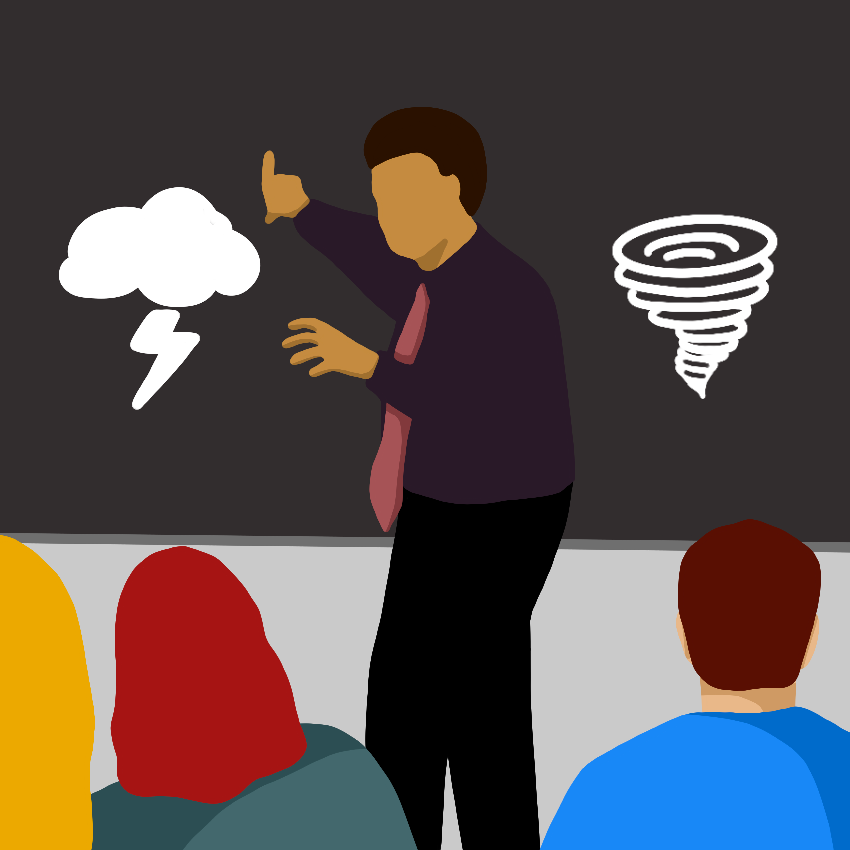UI geology course engages students in environmental awareness
Nov 3, 2020
As the climate becomes an increasingly relevant topic of conversation, one general education course has offered its students a glimpse into the science and effects of climate in our society for the past 20 years. GEO 118: Natural Disasters has been educating its students through the continually evolving subject of weather and Mother Nature.
Initially, the class began as an environmental geology course but soon transitioned to cover the geological impacts of natural disasters. This expanded the course to an area of study that most students could be more drawn in by.
Dr. Stephen Altaner who teaches the class explained the importance of teaching the course.“These natural disasters are events that test our lives tragically, and there are many many ways that we can try to reduce their impact,” Altaner said.
While the topic of natural disasters may conjure up different events in people’s minds, the course covers a list of specific geological events. According to Altaner, the topics of the course include earthquakes, tsunamis, volcanoes, landslides, floods, severe weather, coastal erosion, climate change and meteor impacts.
As the class progresses, students examine the nature, causes, effects and predictions of natural disasters. This type of information is necessary and relevant in current society as natural disasters happen constantly. Being able to predict the next one could save lives.
Get The Daily Illini in your inbox!
Because of the wide range of natural disasters that the course covers, students connect to the material in different ways. Melanie Ji, sophomore in Business, shared her experience and interest in the material about volcanoes.
“We did a lot of case studies on volcanoes, the different types of magma, and the layers of the earth,” she said.
Depending on the length of the class students choose, they can delve into deep discussions about a couple of different disasters or learn about a wide range of them, considering the class comes in full or half-semester terms.
Even more important than the class concepts is the discussion and professor-student interaction. Altaner said he incites meaningful conversation among students, including discussions of whether people should be allowed to live anywhere, and if so, should the rest of society pay for damages when the natural disasters strike?
Fortunately, despite the pandemic, the course has not changed much.
Many students said they enjoy the course material and the amount of information they learn. Ji said that she felt she learned a lot of information while taking the course, especially relating to the University community. She said the professor would connect the information to boneyard creek and different lakes around the Champaign area.
Especially with the seemingly long-winded list of natural disasters occurring regularly around the world, students seem to enjoy the professor’s ability to connect the information they learn to their local community.
“COVID did not affect the course in a lot of ways because there was already an online set up to the course,” said Marjorie Campbell, freshman in LAS.
Because of the history of the course being online, students did not have to worry about a decrease in the quality of the classwork. Along that same line, Campbell shared that she really enjoyed the peer interaction that the course provided through group discussion posts and forums.
“There were discussion posts and response posts each week, so I was interacting with the weekly discussion post to talk about a topic that we chose and reflecting on it,” Campbell said.






